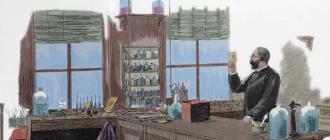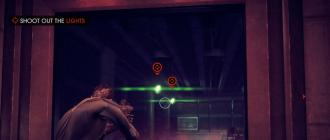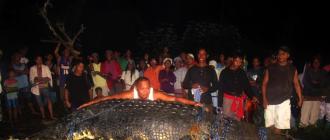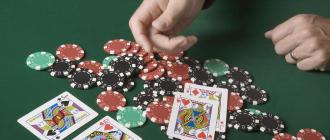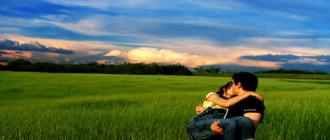The strange geometry of the city of romna. Detailed map of Romny - streets, house numbers, districts of Romny sumskaya
Recent searches (find the address on the map of Romny with street names and house numbers) and the found addresses of houses and streets in the city of Romny: 1st Lutsenko Lane 18, 1st Lutsenko Lane 24, 2nd Lutsenko Lane 29, 2nd Lutsenko Lane 9, Shevchenko Boulevard 5, 3rd Lane of 5 Krupskaya Street, 63 Krupskaya Street, Stepnogo Front Street 3, Mira street 10, 4th lane Mayakovsky 10, Kirov street 103, Kirov street 83, 3rd lane Mayakovsky 26, 3rd lane Mayakovsky 18, Gorky street 98, 3rd lane Gerasimovskaya street 7 , Prokopenko street 43/16, Dudin street 40, Krupskoy street 193, Kirov street 22, Kalnyshevsky street 43, Soborna street 13, Rudenko street 8, Shevchenko boulevard 67, 5th Mayakovsky lane 24, Mayakovskogo street 59, 3rd lane of Komsomolskaya street 9, Gorky street 91, Pushkin street 38, Korzhovskaya street 2, 1st lane of Komsomolskaya street 32, Lutsenko street 38, 3rd lane of Admiral Lozovsky 26, st. Sovetskaya 100, 2nd lane of Sobornaya street 1, Poltavskaya street 66, 1st lane 9 May 20, Gnedasha square 6, Dudin street 17, Prokopenko street 48, International street 13, Komsomolskaya street 33, 63 Kirov St., 6 Mazepa St., 19 Baklai Brothers, 21 Baklai Brothers, 127 Korzhevskaya St., Bu dennoe 21, Suvorov st. 7, 1st lane Konotopskaya 10, Proletarskaya street 63, Sumska street 4, Krupskaya street 14, Kievskaya street 80, Rudenko street 32, Michurin street 55, Chapeva street 37, 1 Getman Mazepa st., 63 Remintsa st., st. 8 March 7,Rudenko street 23, Gorky street 246, 1st lane Kievskaya 29, Rements street 63, Chernyshevsky street 37, Shevchenko street 24,street P oltavskaya 190, Petropavlovskaya st. 11, Monastyrskaya st. 1, Monastyrskaya st. 11, Beregovaya st. 28, Vsekhsvyatskaya st. Rudenko street 3, Gagarina street 17, Gorky street 126, Sobornaya street 8, Ostrovsky street 4, Sumskaya street 9a, Rudenko street 1,Popular searches for address (street, house) in the city of Romnakh: 2nd lane Mazepa, Komarova street, Sadovaya street, Proletarskaya street, Korolenko street, 2nd lane of Zheleznodorozhnaya street, 2nd Parkhomenko lane, Lyashenko street, 2nd Kalinin lane, Utetersky lane, Gogol street, Petrovsky street, street Lyashchenko, Chekhov street, 4th Dudin lane, 1st Potebny Brothers lane, Dekabristov street, 1st Red lane, 1st Dekabristov lane, Krasnaya street, Vashkevich street, Baklai Brothers street, Ovsyannikov street, Bazhanov street, street Vesennyaya, 1st lane of Dzerzhinsky, 1st lane of Katerina Zelenko, Mayakovsky street, Krasny lane, Vesennyaya street, Kievskaya street, 1st lane of Berezovaya street, Jewish street, Romenskaya street, Lutsenko street, Sovetsky lane, Kotovskogo street, street Sumskaya, Hetman Mazepa street,Kievskaya street, Petropavlovskaya street, 1st lane of Krasnoznamennaya street, 1st lane of Konotopskaya street, Romensko-Kievskaya division street, 1st, 2nd lane of Romensko-Kievskaya division streets, Monastyrskaya street, Pushkin street, Korzhovskaya street, street Sovetskaya, 1st Shchuchki lane, Savchenko street, Beregovaya street, 1st Chubar lane, 1st Artyom lane, Chubar street, 2nd Artyom lane, 2nd Kalinin lane, Vsekhsvyatskaya street, Chapaeva street, 8 Marta street , 5th Mayakovsky lane, 4th Mayakovsky lane, Zheleznodorozhnaya street, Shkurat street, Schwartz street, Leonid Poltava street,3rd lane of Komsomolskaya street, Bazarny descent, 8th lane of Mayakovsky, Komarov street, Proletarskaya street,1st Prokopovsky Lane, Marshal Malinovsky Lane, Prokopenko Street, Melnikov Street, Pervomayskaya Street,Korolenko street, 1st lane of Zheleznodorozhnaya street, Nikolaevskaya street, Bazarnaya square, Lermontov street, Komsomolskaya street, 3rd lane of Komsomolskaya street, Zapadinskaya street, Pokrovsky descent, 8th Mayakovsky lane, Shkurat street, 4th lane of Komsomolskaya street , 3rd lane of Komsomolskaya street, Silenko street, Rudenko street,
Distance to Sumy : 100 km.
The ancient city in the Sumy region borrowed its name from the Romna River, tributaries of the Sula. Or maybe chamomile, romaine-color, shared her name with the Romny, sheltering the city every summer white th a carpet of flowers? People have lived here since prehistoric times. Scythian burial mounds on the outskirts of the city remember this. The local settlement of Siverian "Monastirische" even gave the name to the whole archaeological culture - Romny.
Vladimir Monomakh's "Instruction" (1096) recalls the city of Romen, a fortress in the southeast of Russia - for the first time from all documentary sources. The city was revived for a long time after the devastation of the Tatar horde in 1239. In 1604, the tycoon Mikhail Vishnevetsky built a bastion castle on the high bank of the Sula on the site of the old Detinets, where he placed a garrison. Yarema Vishnevetsky reconstructed the outpost in 1644. But this did not help the prince, known for his bad temper: in 1648, the insurgent Cossacks drove Vishnivetsky's army out of Romen. Since that time, Cossack detachments were based in the fortress, which took part in the campaigns against Chigirin in 1677-1678, in the war with Turkey and the Crimea in 1676-1681. And in November-December 1708, the city was the winter headquarters of the Swedish king Karl XII and the hetman Mazepa.
In the 1770s, the leader of the Cossack rebels, Semyon Garkusha, was hiding in the castle dungeons. In 1764, a wooden Church of the Intercession was built in Romny at the expense of a native of Romenchin, the last koshevoy of the Zaporizhzhya Sich, Peter Kalnishevsky. The iconostasis of this temple in 1768-1773. made by the Romny sculptor and woodcarver S. Shalmatov.
Times have changed - and so have the Romny. From the magnate fortress, the city at the beginning of the 19th century. turned into a fair center of the Left Bank. The Illin Fair was especially large-scale, where merchants from Russia, Poland, Denmark, Lithuania, Belarus, France, Turkey, Bulgaria came ... Especially Taras Shevchenko came here twice (1843 and 1845) to the fair. Two Romny theaters worked for the entertainment of the arrivals. It was here that the future Decembrist S. Volkonsky saw the genius actor M. Schepkin and began to collect donations to redeem him from serfdom.
And now the city is one of the industrial centers of the region. It produces paper-cutting machines, oil and gas equipment, band sawmills, automatic telephone exchanges, clothes, shoes, curtain-tulle fabrics. At the same time, the city remains cozy and green. On its outskirts there are two monuments of gardening art: "Beer Forest" and "Ognivshchyna". The Romny Zolotukha Mountain is also a unique natural monument: it is a geological salt dome rich in deposits of rock salt, gypsum, and diabase. It was on this mountain that an oil field was discovered for the first time in Soviet Ukraine in 1937.
The Holy Spirit Cathedral, the Ascension Church, the buildings of the former real and religious schools, the women's gymnasium, the city council, and the zemstvo hospital have been preserved. A local history museum has been operating since 1920. The very first monument in the world to Taras Shevchenko was erected in Romny at one time - its author, famous sculptor and film director Ivan Kavaleridze, is himself a native of the city. And the Romny also played a role in the destinies of the artists G. Stetsenko and I. Parkhomenko, the writers Z. Videnko and B. Antonenko-Davidovich, theatrical figures S. Shkurat and G. Zatirkevich-Karpinskaya, academicians of physics A. F. Yoffe, S. P. Timoshenko O. O. Borisyak, V. V. Korshak.
Here is a map of Romny with streets → Sumy region, Ukraine. We study a detailed map of Romny with house numbers and streets. Search in real time, weather today, coordinates
More about the streets of Romny on the map
A detailed map of the city of Romny with street names shows all routes and objects, including st. Mayakovsky and Shchors. The city is located not far from.
For a detailed study of the territory of all districts, it is enough to change the scale of the online scheme +/-. On the page interactive map of the city of Romny with the addresses and routes of the region, move its center to find the streets.
You will find all the necessary detailed information about the location of urban infrastructure - shops and houses, squares and roads, highways and lanes. The ability to find out the distance and length of the city, lay a route through the territory, search for an address. St. Korzhovskaya and Zheleznodorozhnaya are also in sight.
Satellite map of Romny with Google search is waiting for you in its heading. You can use Yandex search to find the required house number on the map of the city and Sumy region of Ukraine in real time. How
Heraldry

On the heraldic shield are elements of the coats of arms of historical settlements of the region, which were once regional centers: a golden heart with crossed arrows - an element of the coat of arms of the village. Glinsk; a golden crescent with a shining cross over it - an element of the s. Bold and the administrative center of the region of Romny - in the central part of the coat of arms on the green field of the triangle, a golden cross on the grave.
All elements of the coat of arms symbolize the historical path traversed by the Romny lands, starting from the Scythian times. The green triangle should be considered as a location on the right bank of the river. Sula of numerous Scythian burial mounds.
The predominance of blue and yellow colors indicates that the region is an integral part of the Sumy region and Ukraine.
The flag of the Romnensky region is a rectangular green panel with a width to length ratio of 2: 3, bearing a yellow stripe along the lower side (1/6 of the width of the panel), having a ledge in the middle and ending with a cross; on either side of the cross - a pair of cranes.

The coat of arms of Romain was approved by the 21st session of the City Council on May 18, 2001:
The form of the coat of arms is a French heraldic shield; on a green field there is an image of a Maltese cross on a two-stage rectangular dais. The image of a cross on a stylized grave symbolizes the courage and resilience of the defenders of the inhabitants of Romain, who were inherently, defending the city, to stand to death, to the grave.
The gold (yellow) color of the cross symbolizes wealth, justice, generosity, characteristic of the defenders of the native land.
Green symbolizes hope, joy and prosperity.
The prototype of the historical coat of arms was the image of a cross on the grave with an old seal, which has been used since the 17th century. in the Romensky town hall, the hundredth chancellery and the district court. In 1782 this image with the definition of colors was approved by Catherine II as the official coat of arms of Romain.

The flag of the city of Romny was approved by the decision of the Romny City Council on October 22, 2001.
The historical flag of Romain is a rectangular green cloth with the image in the center of the ancient coat of arms of the city in gold on a green field. The ratio of the flag's width to its length is 2: 3. The size of the coat of arms is 2/3 of the width and 1/3 of the length of the flag.
Romny, Romny district
The district is located in the forest-steppe zone of the Left-Bank Ukraine in the south-west of the Sumy region. Borders with Nedrigailovsky, Konotopsky, Lipovodolinsky districts of Sumy region, Talalaevsky, Srebnyansky districts of Chernihiv region, Lokhvitsky district of Poltava region
Settlements 128
The total area is 1.9 thousand sq. km
The population of the district is 41.1 as of 01.01.2007.
The administrative center of the district is the city (since 1096) Romny, which itself is not part of the district.
The rivers Sula, Romen, Bishkin, Khmelevka, Loknya, Olava, Artopolot flow through the region.
City plan of Romny 
The city of regional subordination, located on the right bank of the Sula River, 100 km from the regional center.
Population - 49.454 thousand people. (2001)
Area - 65 sq. km
Romny is one of the leading industrial centers of the modern Sumy region. Paper-cutting machines, oil and gas equipment, band sawmills, automatic telephone exchanges, clothes, shoes, curtains and tulle fabrics and other products of Romny enterprises are widely known in Ukraine and abroad. The largest enterprises in the city are a whole milk substitute plant, curtain-tulle and shoe factories, automatic telephone exchange factories and "Polygraphmash".
Significant deposits of rock salt, gypsum, diabase are associated with Mount Zolotukha, which is a natural landmark and is a geological salt dome, which were almost never developed through their deep occurrence. During the exploration of minerals on this mountain in 1937, for the first time in Ukraine, an oil field was discovered.
The artistic traditions of the city are associated with the names of the artists G.A. Stetsenko, I.K. Parkhomenko, E.P. Minyuri, V.G. Korovchinsky, G. S. Vereysky and others.
The literary life of the city is inseparable from the names of V.G. Poletik, O.Ya. Yushchenko, P.I. Kapelgorodsky, P.Yu. Klyuchina, M.D. Bazhanov and so on. Romny is the homeland of the writers Z.Ya. Videnko, O. I. Gubar, B. D. Antonenko-Davidovich, V. O. Sukhodolsky, G. I. Maifet and other writers. And at the present time the literary source of the city does not dry up. A literary studio operates at the city regional newspaper Vesti Romenchiny. Art studio "Iskusstvo", 6 libraries, a park of culture and rest, the city's leisure center are always at the service of the locals and guests of the city.  & nbsp The city has 12 secondary schools, higher vocational schools, polytechnic and agricultural technical schools.
& nbsp The city has 12 secondary schools, higher vocational schools, polytechnic and agricultural technical schools.
Medical services are provided by the railway and city polyclinics, regional neuropsychiatric and city hospitals, a sanatorium-medical complex of the ATS "Orbita" plant and other medical institutions.
A local history museum has been operating here since 1920. Three local newspapers are issued, programs from local radio and television studios are broadcast, the literary and artistic holiday "Petals of the Romaine Flower" is held annually.
In Romny, conditions have been created for the development of physical culture and sports, in particular, there are a children's and youth sports school, the Electron football club. The champions of republican and international sports competitions were pupils of the Romny physical culture collectives O. Mulin, G. Levchenko, L. Mikhaychenko, S. Gavras.
Romnov history
The territory of the city has been inhabited since ancient times. This is evidenced by the numerous sights of the Stone, Bronze Age, Scythian burial mounds. In the VIII-X Art. within the boundaries of the modern city there was a settlement of the northerners, known as the settlement "Monastirische", which gave the name to the whole archaeological culture - Romny. From the times of Kievan Rus, an ancient Russian settlement on a high plateau in the historical part of the city, as well as chronicles, have survived.
For the first time Romny is remembered under the name of Romain in the "Admonition" of Vladimir Monomakh, recorded in 1096 in the Laurentian Chronicle. Romen at that time belonged to the Pereyaslavl land and, as one of the key fortresses, was part of the Posul defense line, which defended the southeastern borders of Kievan Rus from the raids of nomadic tribes.
Where the name Romain comes from is unknown. Some researchers derive it from the Scythian "raimon" - a camp, others from the Latin "romeno" - a fortress, and a folk legend connects the origin of the name with a field chamomile - a romaine color, which even now covers the outskirts and meadows outside the city with a white carpet in summer.
In 1239 the city was completely destroyed by the Mongol-Tatars. Gradually revived from ruins to the XVI century.
The "old and new Rumensk settlements" - a significant defense point in the south of the Russian state, is recalled in the Resurrection Chronicle. The strategic importance of the city is important, the courage of its inhabitants was reflected in the old coat of arms of the city - a cross on a green background, which meant to stand against the enemy until death.
According to the Deulinsky armistice, the Romny went to Poland, from 1644 the city became the property of the magnate I. Vishnevetsky, who built a castle on the site of the old defensive structures, where he placed his garrison.
The residents of Romen took an active part in the liberation war of B. Khmelnitsky in May 1648 and drove out the army of Vishnevetsky. Romny became a centenary town, after the abolition of the Hetmanate - a povet town, and from the 20s of the XX century. - the district and regional center. & nbsp After 1654, a tsarist charter was issued to Romny to the general clerk I. Vigovsky, who, having become hetman, wanted to create a Ukrainian state independent of Russia.
In the second half of the XVII century. In Romny, Cossack detachments were located, which guarded the city and took part in Chigirin's campaigns in 1677-1678, in the war with Turkey and the Crimea in 1676-1681.
During the Northern War, the winter headquarters of the Swedish king Karl XII and hetman Mazepa were located in Romny during November-December in 1708, who were greeted by the city dwellers with bread and salt.
In 1764, the famous wooden Church of the Intercession was built in Romny at the expense of Peter Kalnishevsky, a native of the Roma region, the last koshevoy of the Zaporizhzhya Sich. The iconostasis of this temple in 1768-1773. made by the Romny sculptor and woodcarver S. Shalmatov.
In the 70s and 80s. XVIII Art. the population of the city actively supported the activities of the detachment of the people's avenger Semyon Garkusha. In May 1783 the town of Romny received the rights and privileges of the city.
Throughout the XVIII century. and XIX Art. fairs, especially Illinskaya, played an important role in the development of the city. It was the largest fair in the Left-Bank Ukraine. Goods from Ukraine, Russia, Belarus, Poland, Lithuania, Denmark, Turkey, Bulgaria, France were brought to the Illin fair.
During the fairs, performances were staged by two Romny theaters. The famous actor G.S. Shchepkin, and the future Decembrist S.G. Volkonsky began to collect donations to ransom him out of serfdom. Twice, in 1843 and in 1845, T.G. Shevchenko. He came specially to the Illin fair.
The glorious traditions of the defenders of their native land were multiplied by the Romans during the Patriotic War of 1812: the Cossack and 5th cavalry regiments of the militia were formed from the Cossacks and peasants.
